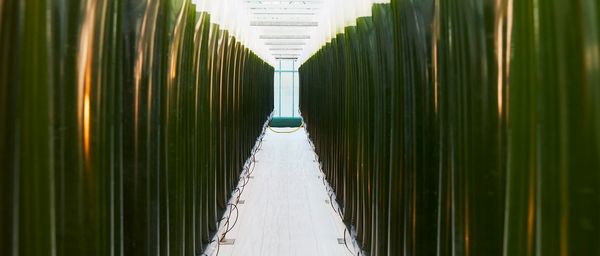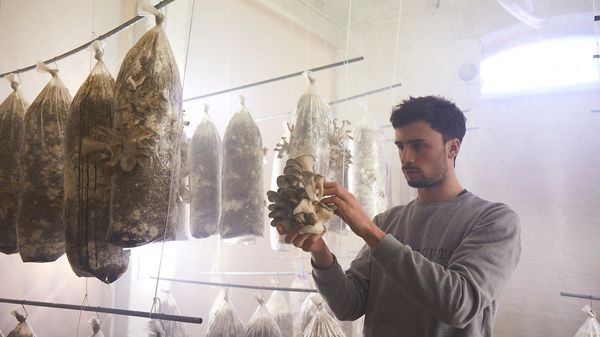
Rich in nutrients and sustainable to boot: around the globe, the appetite for algae is growing. But does the flavour-packed green matter have what it takes to become a food of the future? Here ist the answer of this question.
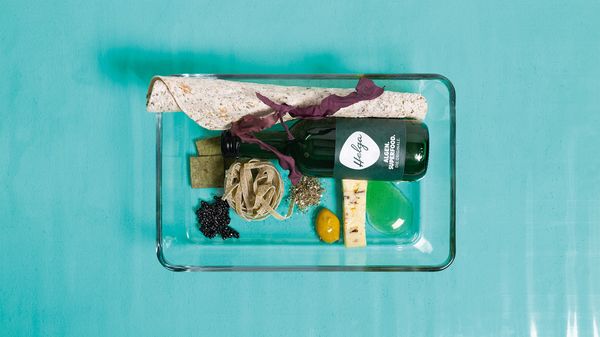
The taste of the sea
The aroma is somewhat reminiscent of fried bacon and the texture so crispy that I can’t help picking a strip straight from the pan and biting into it. It tastes: meaty, umami, salti with a herbal note. Delicate. But that’s not the only thing that makes the palmaria palmata, prepared in hot oil, a suitable replacement for a slice of bacon.
Because the red alga is – just like all macro-algae from the sea – low in fat and carbohydrate, making it low in calories and rich in proteins, vitamins, fibre, omega-3 fatty acids and minerals. However, the best argument in algae’s favour is their sustainability.
Unpretentious Vegetables
Algae grow under conditions that make modest demands on resources; they require no arable or grazing land; nor do they need fertiliser or pesticides. They photosynthesise even in the deepest, murkiest climes. But because harvesting them is more labour-intensive than for their land-lubbing cousins, the crop fields beneath the waves have yet to play a significant role in supplying foodstuffs. Over the past few years, though, a change is becoming apparent. Recent enthusiasm for regional and sustainable food has increasingly led macro-algae to find their way onto the menus of top restaurants in coastal regions, and nutritional researchers are also taking a deeper dive into the development of algae products. In the Fraunhofer Future Food project, for instance, scientists have been experimenting with various use cases within the food sector for several years. One of the market-ready results is a base for drinks made from red algae, used by the northern-German brewery Brauhaus Klüvers in its beer “Klüvers Seegang”. The result is malty and salty, gives off a scent of the ocean and is a welcome addition to a summer’s evening.
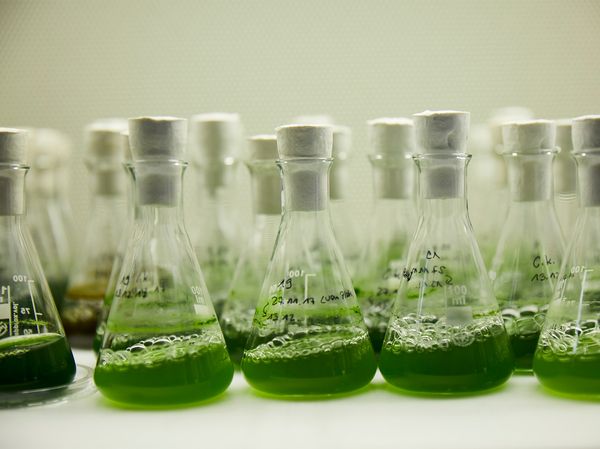
20,000 leagues under the sea
At a basic level, algae are divided into single-celled micro-algae and macro-algae. The latter are marine, are found in the forms of green, red or brown algae, are gathered in the wild or cultivated systematically. They can be consumed raw, boiled, fried, deep-fried or battered. The most-consumed variety of macro-alga are nori, kombu and wakame because they are used in East-Asian cooking for preparing sushi, as a seasoning, as an addition to soup and in many other typical dishes. Only a fraction of macro-algae are approved for sale on the European food market. The 20 that are harvested on the rocky Atlantic coastlines of Spain, Ireland and Brittany, in the cold waters off Norway and in small quantities in the North Sea and Baltic Sea at different depths. EU guidelines for the ecologically-friendly farming of naturally occurring algae varieties stipulate clean bodies of water, away from sources of pollution such as ports and sewage treatment facilities.
Claudia Busse-Uhrig, algae expert at Viva Maris, says: “Algae filter pollutants from the water, which is why we only harvest our plants from waters in the North Atlantic that are level with the polar region. Here, unlike Asian waters or parts of the Mediterranean, there is relatively little maritime traffic and the water is of high quality.”

Cheese, dips and wraps with seaweed
All over the world Food pioneers want to make one of the oldest, most natural ingredients the oceans more popular. That’s why these producers not only offer algae in its dried, pure form but also make it into delicious spreads, spice mixtures, vegan sausages and cheese. Seamore, a Dutch startup, has also been charting new territory since originally establishing a presence in European markets with the dried sea spaghetti “I Sea Pasta” and the dulse “I Sea Bacon”. The newcomer in their assortment is an algae wrap intended to appeal to a wider audience. But the classiest and at the same time animal-friendly product development has emerged from the kitchen of a Dane, Jens Möller: a caviar of sea algae that Möller has refined with truffle extracts, wasabi and other flavours. His company, Tang Huset, has grown to export the crunchy pearls to all corners of the globe.
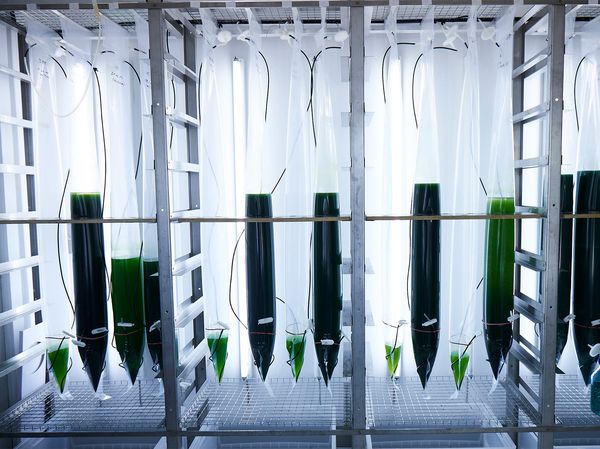
Miraculous miniatures
Another two leaders in turning innovative ideas into delicious food are the sisters Cathleen and Caroline Cordes of the company Evergreen Food. They lead the first ever organic-certified algae farm in Europe, where they focus on the micro-alga chlorella vulgaris. The single-celled fresh-water variety is considered the oldest plant in the world, grows extremely fast, is insensitive to temperature and, above all, is rich in essential vitamins, minerals, secondary plant compounds and health-promoting chlorophyll. Cathleen Cordes “20 years ago, we had an algal bloom in our region, which led to an extreme disturbance in the equilibrium of many water bodies. My father, a gardening engineer who is very knowledgeable about growing fruit, came up with the idea of producing sustainable raw materials from the algal bloom’s nutrition source.” Today, so-called pre-cultures in the company’s labs are pretenders to the throne of the next superfood.

Tiny Superfood Chlorella vulgaris
Clorella vulgaris are grown in compliance with the strictest hygiene standards according to a pre-determined procedure. Before the algae cultures can be used, they are inspected to ensure purity because other algae varieties and tiny predators need to be eliminated. The approved pre-culture is then introduced into a single plastic tube approved for use in food production, together with water, after which it begins to divide repeatedly. Once the culture has grown satisfactorily, it can be decanted between the next tubes, until the entire module consisting of 144 tubes is full of delightfully green water. The contents serve as a seeding culture for mass production and are put into huge ponds. The continuous extraction process is optimised so that a firm algae paste is harvested, dried and then ground into a powder. The fine form in which it is offered makes its contents more easily available to the human body, but the taste and smell do take some getting used to for the end consumer. This is why chlorella is often used merely as a dietary supplement in tablet form. “Five years ago, we came upon the idea of developing chlorella products that are appealing to all the senses and are versatile in the kitchen. This culminated in algae oil and gently sweet pearls, which we affectionately named ‘Lüttge Algae Pearls’,” Cathleen Cordes. The sisters are not alone, also other food company pimp new products with the tiny, green Superfood.
